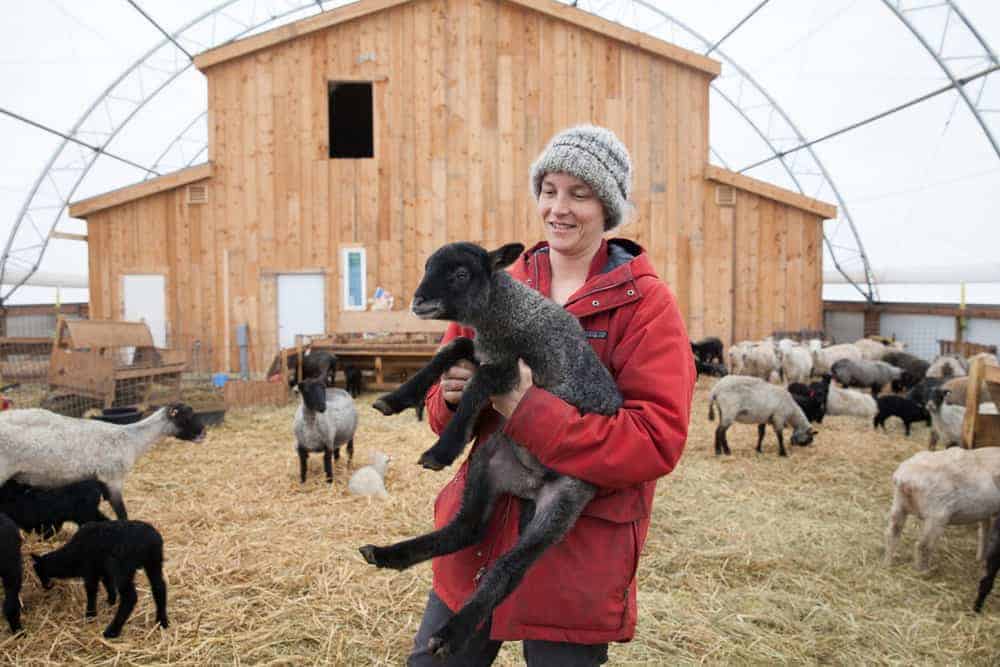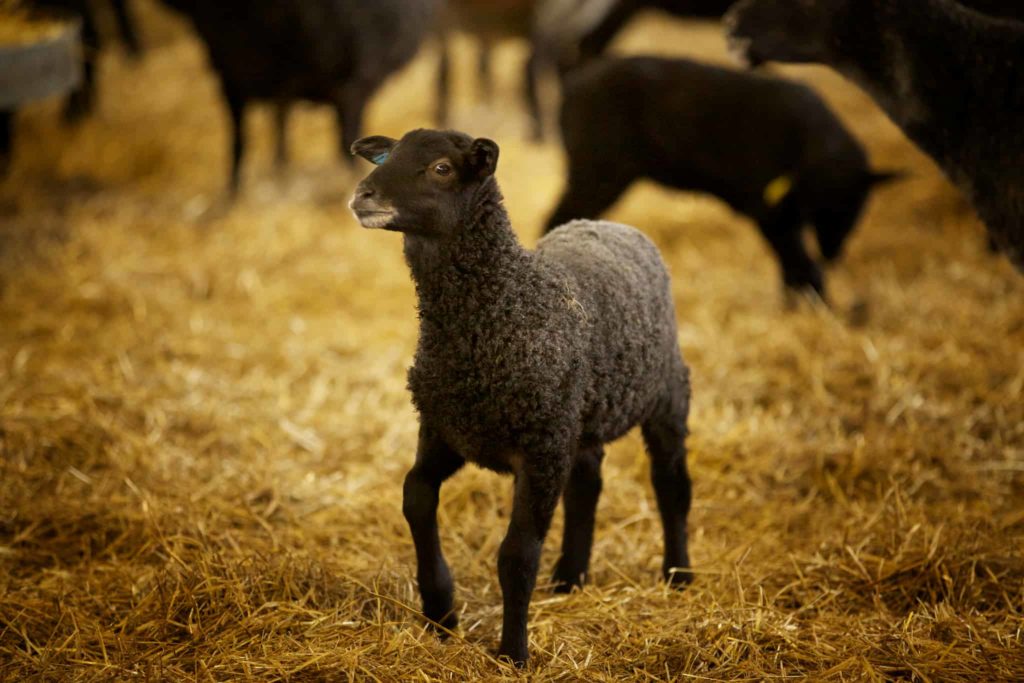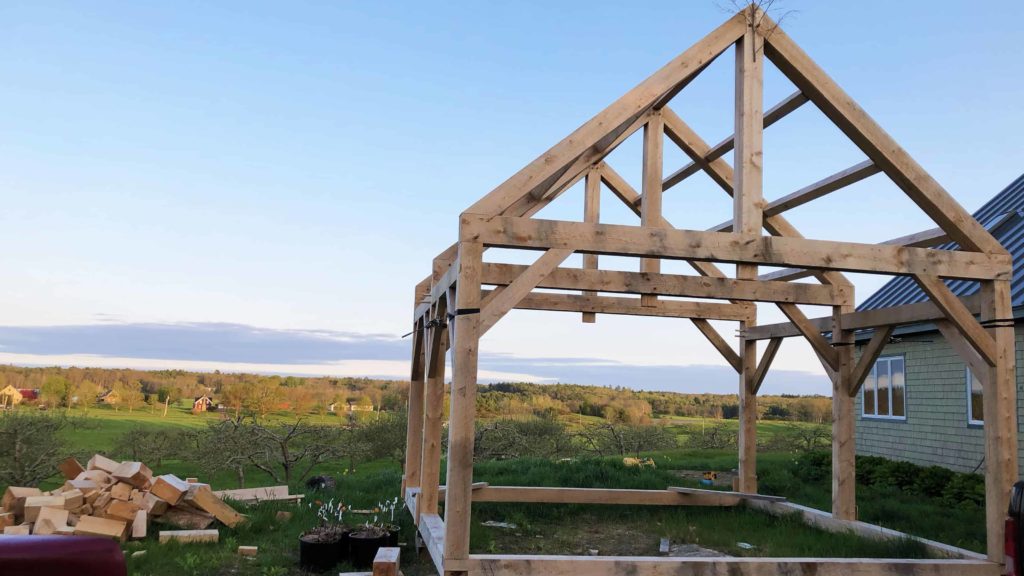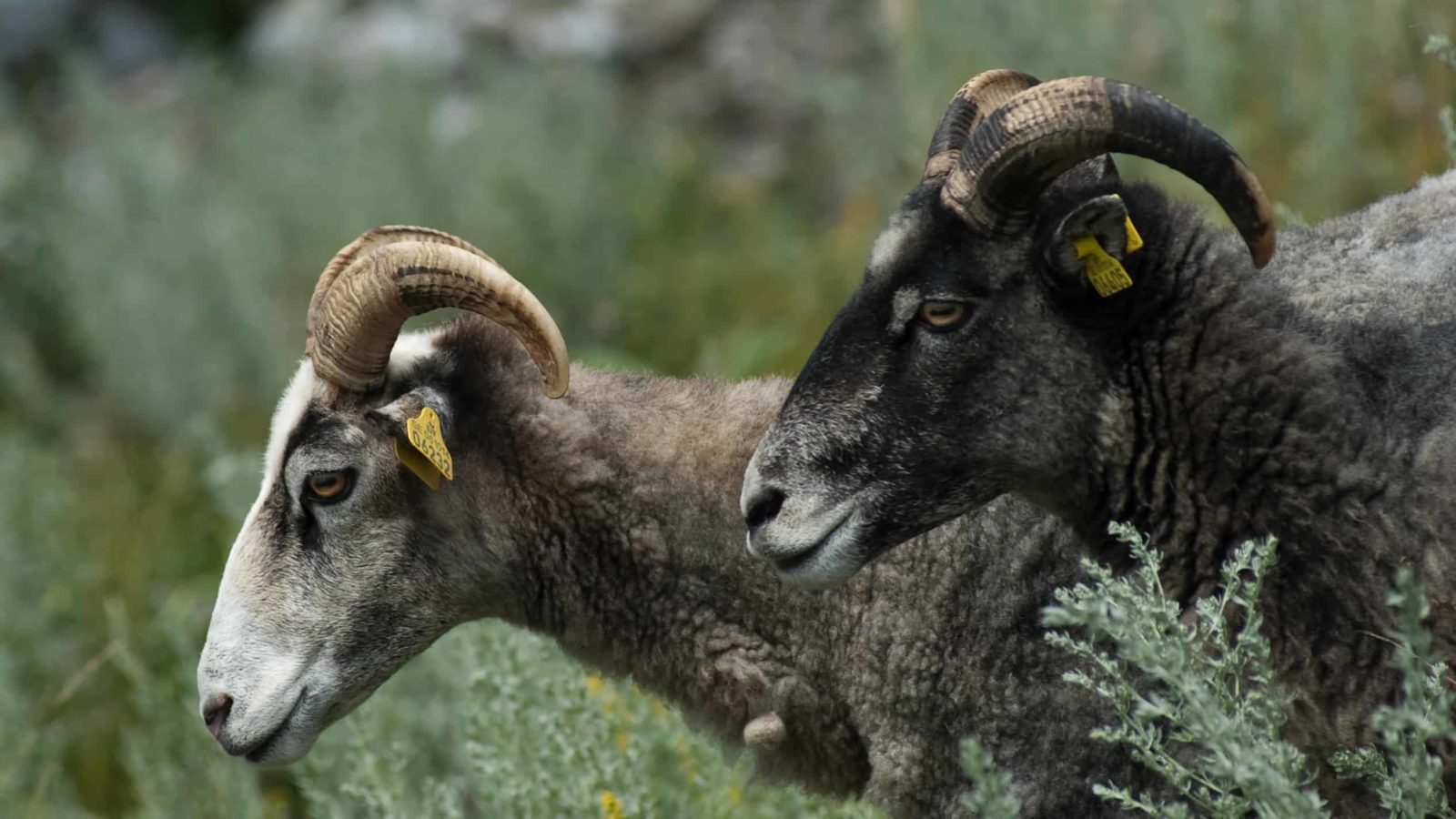Growing up in the Bay Area, Laurel Gates got to know her grandfather’s sheep. He always had a few in those days, she said. When she was a girl in California, he was a scientist at the Stanford Research Institute.
“He’s an incredibly smart person,” she said, “and connected to the source of things.”
He and her grandmother tended a large garden, and her grandmother canned from the vegetables they grew. They weren’t Silicon Valley engineers she said, but he was a researcher.
“They were hippyish, and they inspired me to keep intellectually curious and connected with food.”
He would give her the pelts from his sheep. She taught herself traditional tanning. When she was 18, she spent a winter in Iceland.
“It’s even darker and colder than Maine,” she said.
And when she came back, she got sheep of her own. Today she lives at Shepherds Craft Farm in a house in a house she and her husband built themselves, with tall windows and beams of honey-golden wood, and she may look up from her garden on a fall morning to see two her border collies excited and intent on the silvery ewes grazing in the field.
She breeds Gotland sheep, because she loves the feel of their wool. Gotland wool is long and curling, silky and shining — in the darker fleeces, almost iridescent.
“It’s lustrous and beautiful,” she said.
The pelts curl like pearls in shades of grey and black and white and silver.
“It’s like sanding down wood,” she said, “the glow.”

Laurel Gates holds a Gotland lamb on a brisk morning. Press photo courtesy of Shepherds Craft Farm.
She first chose Gotland sheep because she loves the Lord of the Rings, and the elven cloaks in J.R.R. Tolkien’s fantasy are made of Gotland fleece.
“It’s a life goal to make a Gotland cloak,” she said.
She has made hats and scarves, and she spins the fleeces into yarn for weaving and knitting. She offers pelts at the Good Supply in Pemaquid, Maine.
She loves the feel of fleece.
“When you hold something made of wool, it instantly takes on your body heat,” she said. “And on a warm day it feels cool.”
Gotlands have lived in Sweden for centuries, since the Viking days, but they reached the U.S. in 2007, Gates said. She found the first breeder to bring them here, and in the U.S. they are always crosses. Hers may have Merino in their blood, Shetland, Leicester, Teaswater and Wensleydale, but she can breed for the qualities she loves in Gotland wool.
She began in Maine with a farm in Whitefield and a flock of more than 300 head of sheep. Then she moved to Woolwich, outside Bath, where she and her husband built their own house, and she is reclaiming a field for pasture that has lain fallow for 20 years. She keeps a flock of 40 sheep now, and she hopes to expand.
Sheep are sustainable, she says. Hers can thrive on carefully rotated grazing and local hay in the cold weather, with a seaweed mix from the farm and minerals. They do not need grain, and they are small enough that she can doctor them, shear them and move them around. After timber framing all day, she said, laughing, she can handle 200 pounds of a pissed-off sheep.
She finds a well-manage pasture itself is sustainable. Birds can nest there, and pollinators and insects find nectar. The root systems of the grass create channels in the soil for moisture. She has seen voles and rabbits, around her pastureland, hawks and deer.
“It’s a vibrant ecosystem,” she said.
Gotland wool is long and curling, silky and shining — in the darker fleeces, almost iridescent.
To care for it well, she has to move her sheep every day, so the grasses they like best can regrow. The action of the sheep moving and tugging and chewing will stimulate the grass, she said, and as the grass grows it can take in increasing amounts of carbon dioxide and fix it. A properly managed pasture, she argues, can sequester more carbon than a woodland.
The sheep also fertilize the grass (and leave any parasites behind to decompose naturally before they return to that ground).
On her farm in Whitefield, she said, when she moved her sheep from one section of pasture to another, she was mimicking the way a herd of bison would group together and move across grasslands in response to wolves. The bison clustering and grazing and moving on, has made the rich topsoil in the Midwest.




“The current model of portraying meat as an ecological disaster is short-sighted,” she said.
For animals raised in feed lots, she sees many reasons for concern for the health creatures and the environment. Cattle and sheep raised crowded into lots have a very different life, she said, eating grain out of feeders, standing in the same place, exposed to their own dung and heavily treated for worms.
“Where is the feed coming from,” she said, “and where is the manure going to? And what’s powering the feed truck?”
But for her, properly managed grass-fed meat turns that argument on its head.
“You have a better local economy,” she said, “mall farm enterprises, small businesses where people can make a decent living, and work in a rural area where it’s beautiful, and actually feed people.”
More small farms would help in feeding people, she said, as they would encourage more smaller slaughterhouses and make it easier for small farmers to process their animals for meat. She processes some of her sheep herself for her own use, she said, and she wishes she could do the same for other people, because it is much easier for her sheep. She handles them all the time, looks at their wool and checks their feet, cares for them with a gentle and easy familiarity, so they feel no stress around her. And when she needs to, she can put one down quickly and painlessly.
She respects the ends of their lives, as she welcomes the new lambs in the spring and watches them grow. She knows everything that happens to them.
“The point I wish I could say from the mountaintops,” she said, “is that we need to have a broader view of every action and what leads to a life or death.”
I have had ties to midcoast Maine all my life, as my mother’s father loved and new it well. I learned about Laurel Gates’ Gotland sheep on a recent visit to the Good Supply, an art and artisan market and community gathering place in New Harbor, and I reached out to Laurel to learn more.

